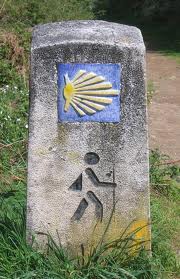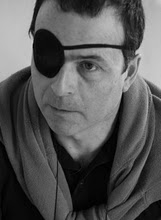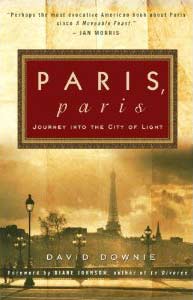
David Downie: Truffles in Black and White: Part Three: the Truffle Heartland of Southwest France
by David Downie
“Even an expert has difficulty distinguishing brumale from melanosporum,” growled Pierre-Jean Pébeyre, France’s leading dealer of fresh and conserved melanosporum. I met Pébeyre on a freezing day in February in Cahors. Like many traditionalists Pébeyre expressed hostility to spore-impregnated trees, the probable source of the brumale infestation.
 Pébeyre estimated that 5 percent of the black truffles he buys at premium prices turn out to be brumales. “You buy truffles when dirty, and you can’t tell. The ugly truth comes out after brushing.”
Pébeyre estimated that 5 percent of the black truffles he buys at premium prices turn out to be brumales. “You buy truffles when dirty, and you can’t tell. The ugly truth comes out after brushing.”
The Pébeyre truffle plant, founded in 1897 by Pierre-Jean’s great-grandfather, is based in central Cahors, capital of the Lot département. The Lot’s pre-Revolutionary name was Quercy, a deformation of the Latin quercus—oak. The scenic, oak-covered Quercy and abutting Périgord are France’s main melanosporum source. Another common name for this truffle is truffe noire du Périgord.
With a sense of humor as noir as the truffles he trades, Pébeyre, in a blue lab coat taut over his stout frame, walked me through the sorting, grading and brushing processes. He held up two black truffles that appeared identical, with rough patterned skin like a dog’s nose. “Brush a brumale and the skin detaches,” he grunted. With a pocket knife he sliced the brumale, pointed out the dark brownish exterior and flesh, and the thick, white veins within, and offered a taste. It was crisp, smelled unpleasantly of alcohol, and was flavorless.
 Pébeyre then sliced a melanosporum, noting how the outside was asphalt-black, the flesh gray-brown, the pattern of veins fine. It was crunchy, smelled pleasantly of mushroom, and, I suggested, tasted something like strawberry jam and chocolate. Pébeyre fought back a frown.
Pébeyre then sliced a melanosporum, noting how the outside was asphalt-black, the flesh gray-brown, the pattern of veins fine. It was crunchy, smelled pleasantly of mushroom, and, I suggested, tasted something like strawberry jam and chocolate. Pébeyre fought back a frown.
“Mélanos smell and taste like mélanos,” he said, using the regional abbreviated form for melanosporum. “Why make taste or nose associations?”
The Pébeyre plant once processed tons of local melanosporum. With dwindling supplies, however, sourcing has widened to Italy and Spain. “The Italian and Spanish mélanos are just as good,” Pébeyre insisted. “The problem is brumales and others.”
Such is the demand for truffles in France that brumales and many undesirable truffle varieties are not discarded. They find their way into pâtés and truffled foods where they cannot be identified readily. France also imports around 50 tons per year of Chinese T. indicum; Pébeyre sells indicum worldwide. “Some people actually prefer it because it’s mild,” he shrugged, “and everyone likes the price.” In Europe, Chinese truffles fetch a fraction of the price of melanosporum. Boosters say Chinese indicum taste of moss and undergrowth, are not “bad” merely “different” from melanosporum.
 However some unscrupulous retailers and restaurateurs fraudulently pass off lesser truffles as melanosporum. “It’s bad for business,” sighed Pébeyre, whose products are clearly labeled. “And in this business reputation is everything.”
However some unscrupulous retailers and restaurateurs fraudulently pass off lesser truffles as melanosporum. “It’s bad for business,” sighed Pébeyre, whose products are clearly labeled. “And in this business reputation is everything.”
Over lunch at Pébeyre’s comfortable house we savored delicious tastous, sandwiches of long, thin, lightly buttered country bread and shaved raw brumale seasoned with salt and pepper baked in a very hot oven for about two minutes. We followed with hearty truffled cervelas sausages and truffled mashed potatoes.
As with white truffles, the food melanosporum accompanies should be simple. Unlike whites, however, blacks stand up to cooking. “Cooking melanosporum transforms the flavor,” said Pébeyre, citing a handful of classic French recipes including poulet en démi-deuil (roasted chicken with sliced truffles under the skin). “Cooked truffles, whether they’re fresh or conserved, are different, more complex, less forceful than fresh, raw truffles.”
Conserved melanosporum are sterilized in 115° C boiling water for 2 1/2 hours. The juice is sold separately and is, to my palate, as flavorful as the conserved truffles themselves.
The French melanosporum harvest has at times dipped to or below a mere 10 tons in bad years. There have been many bad years in recent decades, and very few good years. Pébeyre ascribed the decline to rural abandonment, meaning demographic shifts of farming populations to cities. He also cited unsuccessful propagation efforts, and changing weather patterns. “There are fewer summer storms and to thrive all truffles need heavy rainfall in July and August,” he explained, adding, “it’s possible one day we’ll simply run out of melanosporum.”
 About 10 kilometers by road due south of Cahors at the government-funded Station d’expérimentation sur la truffe, chief botanist and trufficulteur Pierre Sourzat, an excitable, sinewy man in his 50s or early 60s, showed me spore-impregnated seedlings he was growing and took me to visit two truffle plantations. An affable zealot whose mission is to unravel the mystery of mycorrhization and bring back the days of 1,000-ton melanosporum harvests in France, Sourzat radiated optimism about boosting truffle production worldwide through scientific methodology, soil preparation and fertilization, and summertime irrigation. He spoke in a rapid-fire tenor voice, pulling me along as he raced to keep up with Boubou, his trained golden retriever. Within minutes Boubou had unearthed a dozen small brumales, melanosporums and other truffles.
About 10 kilometers by road due south of Cahors at the government-funded Station d’expérimentation sur la truffe, chief botanist and trufficulteur Pierre Sourzat, an excitable, sinewy man in his 50s or early 60s, showed me spore-impregnated seedlings he was growing and took me to visit two truffle plantations. An affable zealot whose mission is to unravel the mystery of mycorrhization and bring back the days of 1,000-ton melanosporum harvests in France, Sourzat radiated optimism about boosting truffle production worldwide through scientific methodology, soil preparation and fertilization, and summertime irrigation. He spoke in a rapid-fire tenor voice, pulling me along as he raced to keep up with Boubou, his trained golden retriever. Within minutes Boubou had unearthed a dozen small brumales, melanosporums and other truffles.
Peak truffle production in France coincided with the phylloxera outbreak that decimated vineyards in the late 1800s, Sourzat explained. “Desperate grapegrowers replaced vineyard tracts with truffle-oak plantations. They bore fruit for decades but after World War Two weren’t well maintained or replanted, and we’re suffering the consequences now.”
Host trees take 5 to 15 years to bear truffles, producing for 40 to 60 years thereafter. “If we hadn’t reforested with spore-impregnated trees decades ago we might have no truffles at all by now,” Sourzat insisted. “Mycorrhization does work. Look at Spain. Soon plantations in Oregon, Texas and New Zealand will be commercially viable.”
In the fourth and final segment of Truffles in Black and White I travel to the legendary truffle town of Lalbenque and meet truffle-hunter Marthe Delon and her truffle-hunting pig.
The photos in this series of articles on truffles were taken by Alison Harris. You can see the entire set as a slide show in Food Art: Behind the Scenes of the Noble Truffle, food photography by Alison Harris.
 Paris to the Pyrenees: A Review of David Downie’s Book
Paris to the Pyrenees: A Review of David Downie’s Book














 by Jonell Galloway
by Jonell Galloway































